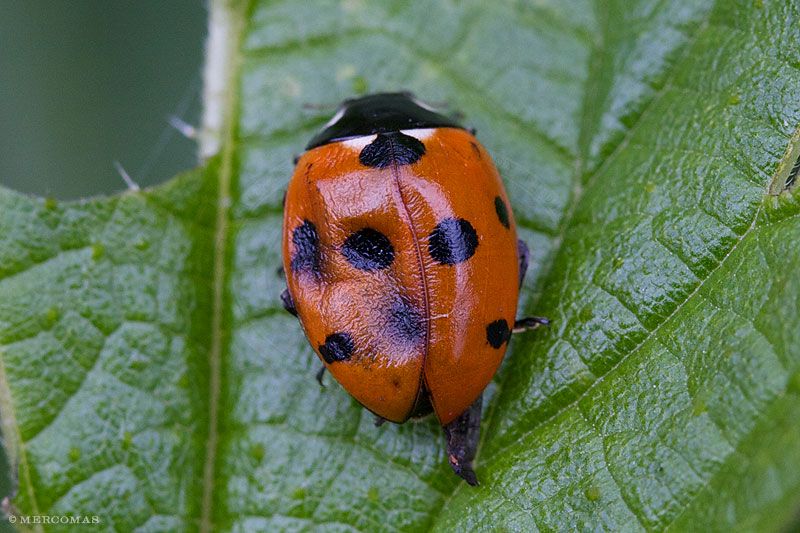A Ladybugs Life
The Ladybugs are popular with the people and carry different names in the local vernacular. The popularity is based, among other things, that they are useful in horticulture and agriculture, since they alone in their larval period, depending on the type eat up to 3000 aphids or spider mites.
They are variable in appearance, which makes their determination. The same kind of pattern can occur in dozens of variants. Some, such as the alfalfa ladybird achieve even counted more than 4,000 variants.
Previously, these variations were within the same species occupied with their own name, for example, the two-spot ladybird (Adalia bipunctata) are more than 150 names, which, however, today are no longer used and scientifically meaningless.
In some sub-groups - say, within the subfamily Scymninae - a determination can be difficult and reliably only by examination of the genital organs occur. In addition to the genitals, the head capsule, the head shield and the probe approaches are often reliable distinguishing characteristics of similar species.
The beetle can fly well and reach 75-91 wing beats per second. Some species such as the Ladybird (Calvia decemguttata) are attracted at night by artificial light. This suggests nocturnal flights spread.
Staining
The black color is produced by melanin. In newly hatched animals, their color shows after a few hours. You are at the beginning almost white or yellowish and the chitin is not yet cured [fig 003]. With the kind Sospia vigintiguttata are the beetles in the first year until brown and turn black during the winter. Environmental influences affect the discoloration. At temperatures below 20 ° C they can and will occur due to high humidity accelerated and reduced by strong light.
Some species are also different colors within the species before, so there is a two-point red with black spots, but rarely vice versa as black bugs with red dots (melanism). In marine, damp areas and in large urban centers with a strong industry to develop much more black shapes. This can also include the influence of the environment. The black shapes are more dominant than the red ones, and bring even more so dark offspring.
The red form of the two-point has a higher chance of survival during the winter, the black breed for the better and compensate for the losses. The reason for this is that the beetles, like all insects, are poikilothermic. This means that their body temperature depends on the ambient temperature. Black colored body parts absorb more strongly than red-colored body parts.
When lighting is the body temperature of the black version, about 5.5 ° C, the red variant of approximately 3 ° C above the ambient temperature of 18 ° C. It also speeds up the metabolic activity of the animals. In the winter, but that is because of the large temperature fluctuations of disadvantage. It is based on the higher mortality.
The conspicuous coloration is a warning signal to predators. In addition, they have an unpleasant, bitter taste, which makes them unattractive. You can also at risk of a yellowish liquid from a separate opening in the hinge eyes (reflex bleeding), which sells for an unpleasant smell from their enemies, on the other toxic alkaloids (Coccinellin) contains. At the same time she only sees dead ( Thanatos) and draw in their legs in small depressions (groove) on the underparts. For certain types of Epilachnini the yellow liquid is made of special dermal glands discarded.
Points
The main feature of the ladybirds, the points are symmetrically arranged on its top wing . They are mostly black, there are bugs but they also bear the bright red or brown spots, with types 2, 4, 5, 7, 10, 11, 13, 14, 16, 17, 18, 19, 22 and 24 points occur. Within individual species can also vary the points. Either the beetles have no fuse, or the dots so that almost the entire body is black.
The number of points is contrary to a widespread error in not the age of the beetle, but the number of points characteristic of each type and does not change during the life of the beetle. Within the close relationship of individual species (as in the genus Coccinella ) are similar to point variations.
Larvae
The appearance of the larvae is very varied depending on the type. Most are long and clumsy. Their length varies between 1.5 and 15mm. Most are blue-gray, brown or yellow in color and have yellow, orange or red spots. They have black or red warts spread over the body, from which spring bristly hairs or spines. Often it can be inferred from their color on the adult beetles.
For example, the larva of the 22-point, like the beetle is spotted yellow and black. They are up on the Stethorini with a layer of wax -coated, which they, among other things, ants protect. The larvae of some species (such as the seven-point) have relatively long legs and see dragonfly larvae similar.
Food
The main food of many species of ladybugs and their larvae are leaf and / or scale insects . With a sufficiently large range, they eat up to 50 units per day and several thousand during their entire life.
The beetles are therefore among the beneficial insects are counted and for the biological control bred. However, there are also species that are vegetable (subfamily Epilachninae) or mildew - or fungi (tribe Halyziini and Psylloborini , including the Sechzehnfleckige ladybugs and twenty-two point support).
For food of ladybugs, but also include spider mites , bugs , thrips , beetles - sawflies - and even the occasional butterfly larvae . When food is scarce, access to the back and sometimes predatory species on plant foods.
The fruits are often, but also pollen . The larvae of Bulaea lichatschovi feed exclusively on pollen.
In the last larval stage, the larvae consume the most food. This stage is accelerated by high ambient temperature. This makes them, in particular those of the genus Coccinella , voracious, but consume less total lice, although they then propagate because of better conditions for them anyway stronger.
On the other hand, in low "Blattlausbedingungen" the Coccinella contribute to the complete disappearance of the louse. The number of hunters and prey regulated but by themselves react as the ladybird larvae when malnutrition is very sensitive step, after a year with lots of lice and the resulting number of beetles in the following year, a few bugs, too few prey is available to To ensure the development of new larvae.
The ladybugs and their larvae are particularly well cannibals . Especially in mass occurrence, the animals eat each other. The first larvae also feed on a regular basis not hatched their own kind, which are often lost more than half of the eggs.
Copulation
Directly after the overwintering ladybirds couples begin copulation . This can often be several hours (0.5 to 18 hours) claim, but not spectacular is taking place. With the tip of the penis guide channel is hooked into the female eighth and ninth sternite to push apart the last sternite. This allows the penis to penetrate the male.
The couple clung to each other is very strong. There are three spermatophores transferred, which is unusual for beetles. After mating, the male with the hind legs or either side by rolling solved by the female. While one pair is enough to copulate with the females permanently, but are often up to 20 additional completed with another male. [2] In most species are sperm from the female in a spermatheca ( seminal receptacle ) kept.
In Stethorus punctillum missing this, so necessary for the entire fertile period new partners to further ripen the eggs are fertilized.
High temperatures affect the mating behavior of certain species: The genus Aphidecta then multiplies exponentially. The population dynamics, however, depends not only on the temperature. For example, go for the two-spot ladybird ( Adalia bipunctata ), despite higher daytime temperatures in the summer mating activities back.
This will reduce the infestation of the beetle by the parasitic mite Coccipolipus Hippodamia , which is transferred during mating and common and can lead to infertility in females. [3]
Eggs
Late April and early May are taken by the Ladybug females up to 400 eggs, depending on the species in portions of 10 to 60 pieces or individually, to close plants suitable food. This happens most often at the underside of leaves or needles in a row or in crevices of bark.
The color and shape of the eggs is very different depending on the type. The length varies from 0.4 and 2 millimeters and the shape is either thin, medium or coarse.
The Epilachna argus deviate from their long, pointy eggs. The eggs are up to those of all Epilachninae without structure. Their color is usually bright yellow to orange, the black ball ladybugs ( Stethorus punctillum ) white gray.
Their development is dependent inter alia on the temperature and humidity and is completed after about five to eight days. When the temperature drops below the tolerance value (at Stethorus punctillum about 12 ° C) [4] comes to a halt in the growth. Shortly before hatching, the larva can be through the thin amnion ( chorionic recognize).
In order to free themselves from the egg, the larvae of many species with Eizähnen on the head, back and are prothorax equipped to be dropped until the first molt. It takes about an hour to open the egg, and another to get rid of it permanently.
Development of the larvae
The hatched larvae develop within 30 to 60 days. During their development, they shed their skin depending on the kind of three or four times. Their growth designed differently depending on body part, and the bristles and coloring is different at different stages.
If they are fully grown, glue them to the abdomen using a secretion on leaves, twigs, stems or bark firmly. They then molt again and push back the skin to the point of attachment to the plant.
They pupate in a mummy doll, which is atypical for beetles. Their limbs and antennae are not free, but are bonded to the body. The color of the doll varies between dark, light, reddish brown or gray and is affected by the ambient temperature.
The freshly skinned doll begins to curl in its further development and to be strong in the paint before it slips from six to nine days after the final bugs.
Again, the development of the temperature and humidity dependent. Initially, the freshly hatched beetles, dyed bright gain, but after a few hours of their actual color. From larva to fully trained ladybugs can pass up to one year.
Ladybugs in various stages
The larvae feed on all plants and make their prey (mainly plant lice ) to eat or mildew or mold.
Reproduction and life expectancy [ Edit ]
The ladybugs reproduce normally in Central Europe twice a year, so the second generation emerges in July or August and overwinter before they turn their eggs in the spring bears.
Usually, the ladybugs live in Central Europe for a year and overwinter only once in fourteen-point-ladybugs and Asian ladybugs were already observed two winters.
Wintering
The beetles overwinter in large groups like ( aggregation ) and can be particularly between double windows very annoying.
Usually they gather on hills among mountain peaks and plateaus and wide valleys. Especially lausfressende species whose prey occurs only briefly, form large aggregations, also the shortage of food or hot summer with the dormancy to bridge.
Before their sleep, they collect fat , lipids and glycogen in their bodies in order to feed upon them during the suspension. In California were already at a wintering place an estimated 42 million animals of the species Hippodamia convergens sighted. However, these are isolated cases.
Individually they rarely overwinter. Usually this happens in the above aggregation or in small groups on the ground, under stones, bark or leaves, or moss in the grass.
Hybridization
Sometimes it happens that intersect with each other closely related species.
This comes about in Central Asia, near Tashkent in front, where the distribution areas of Strichfleckigen ladybug Chilocorus bipustulatus and Ch Geminus overlap.
Basically, the crossed offspring, if they develop at all and are viable, self-sterile and can not beget offspring. They often have a peculiar drawing more or less similar to the two mixed species.
Voltinismus
At the ladybugs, there are four different ways of generations ( Voltinismus ): univoltine species: their reproduction takes place in the summer, after a possible summer to winter, the animals rest.
They include most of Central European species.
bivoltine ways: You have two generations per year, either just hatched their second after the first generation, or until after the summer rest.
In Europe these are temporarily Adalia bipunctata or Coccinella septempunctata . polyvoltine species with diapause: Here come many generations per year, which then overwinter. They are found in warm areas, where there is winter polyvoltine ways: they constantly bring forth new generations where there are no seasons.
They live in the tropics and warmer regions such as in India , Florida and Hawaii
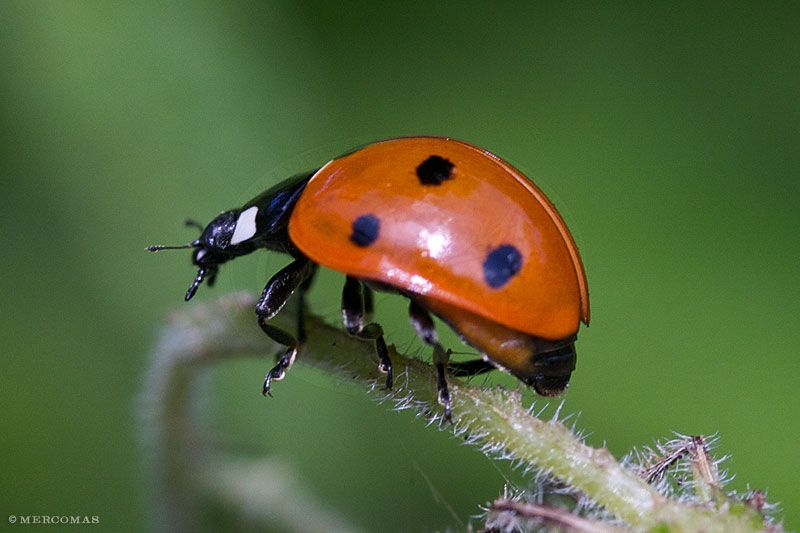
Adult Ladybug [fig 001]
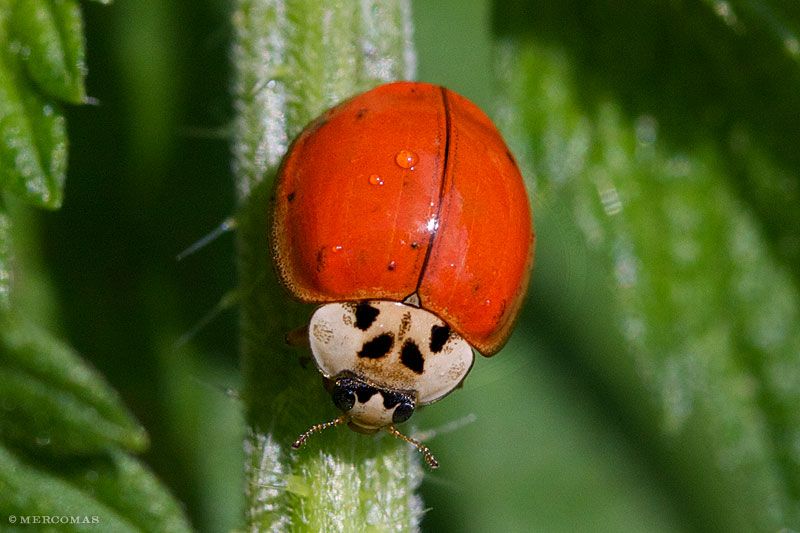
No Dots
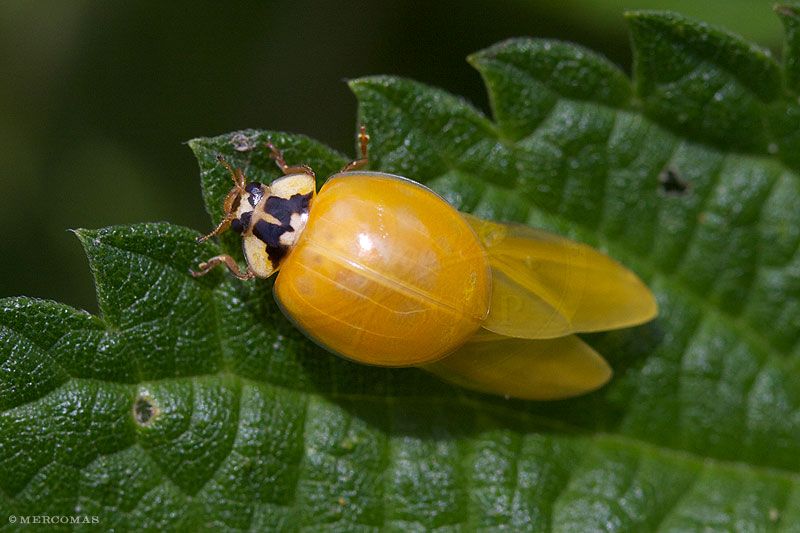
Developing ladybug [fig 002]
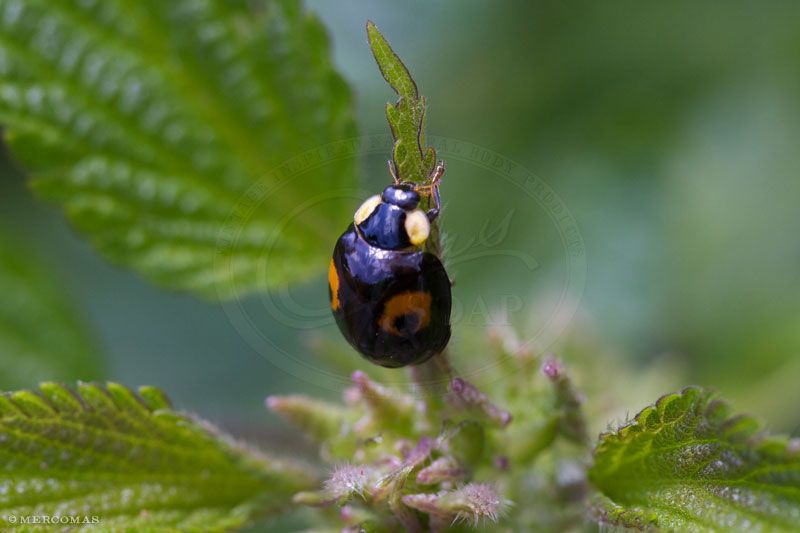
Black Yellow Dotted
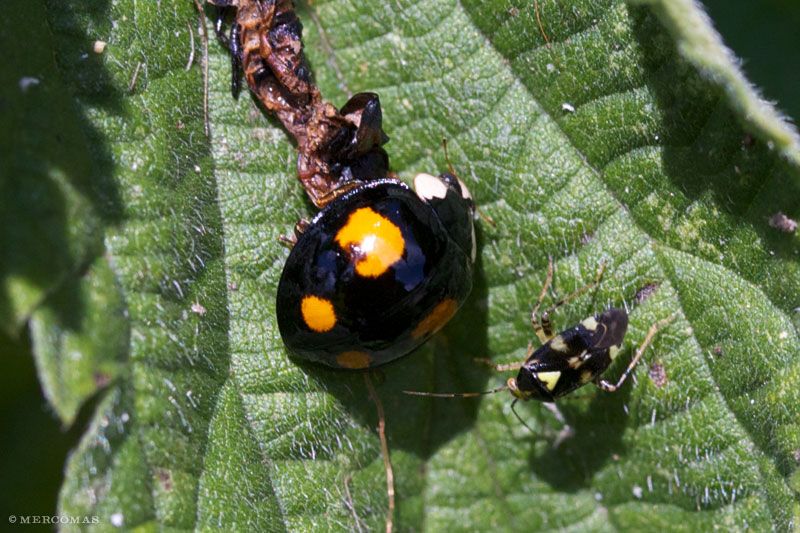
Black Yellow Dotted
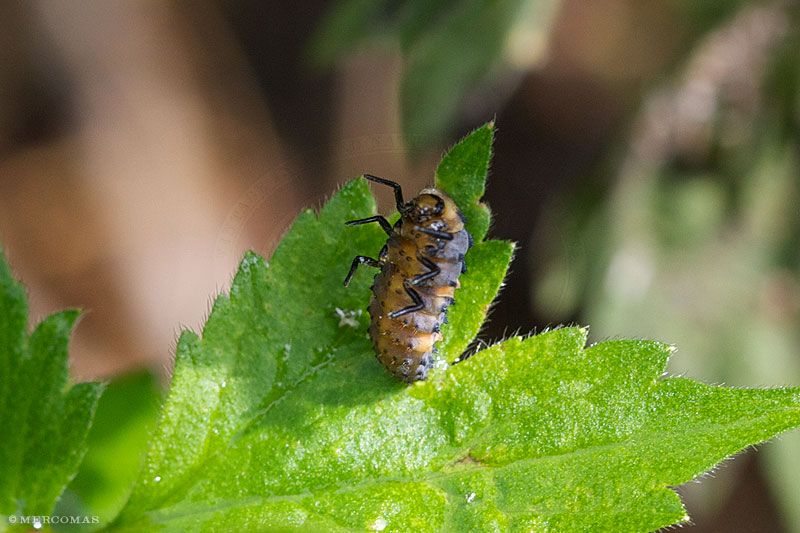
Larvea attached to leaf
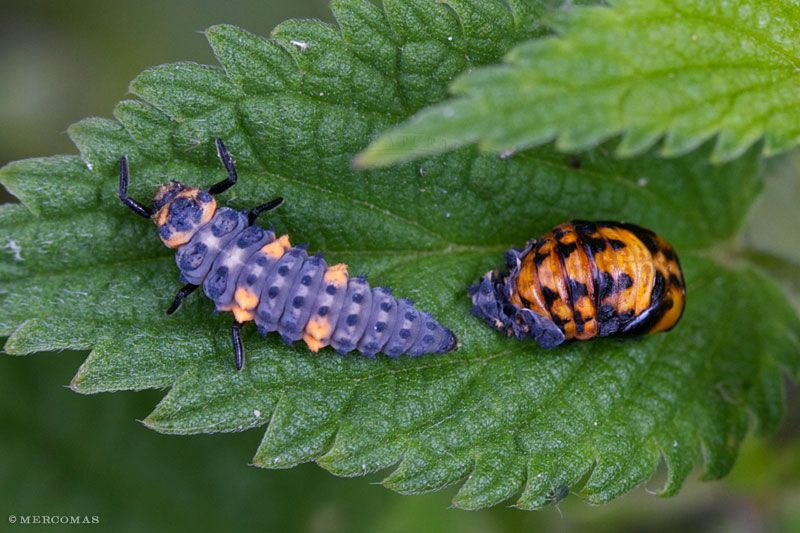
Larvae and Cocoon
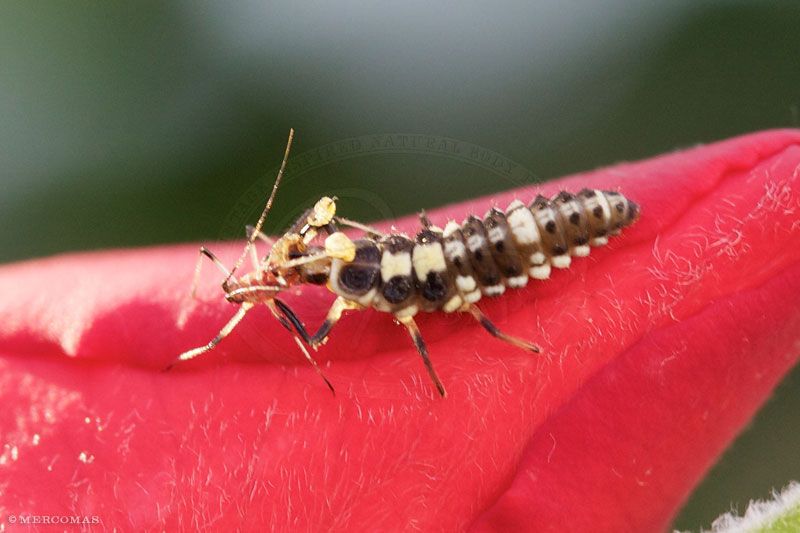
No Dots
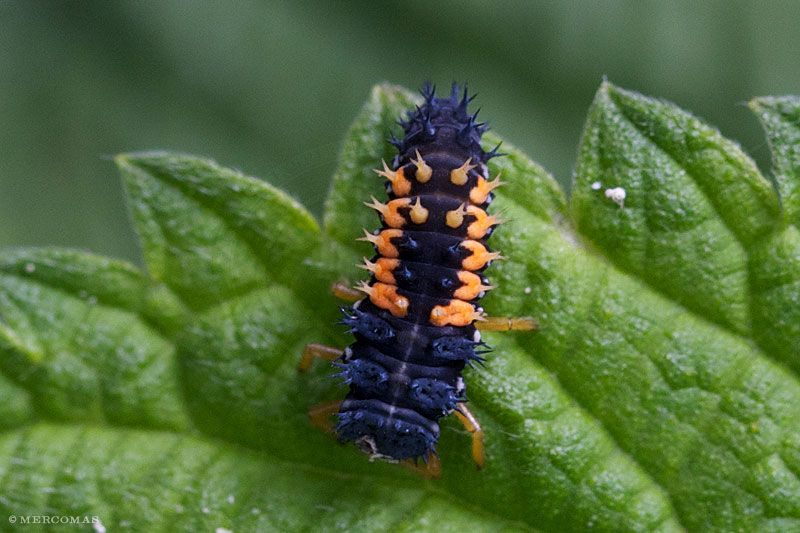
Different Species
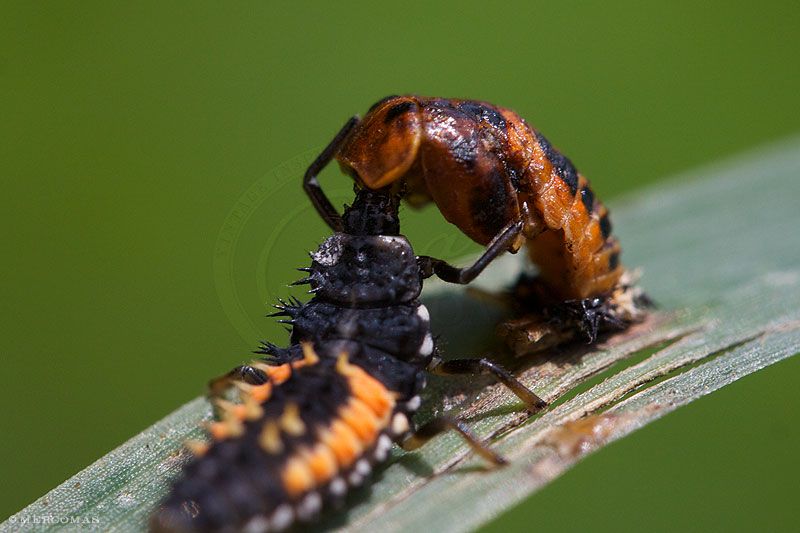
Larvae feeding on cocoon
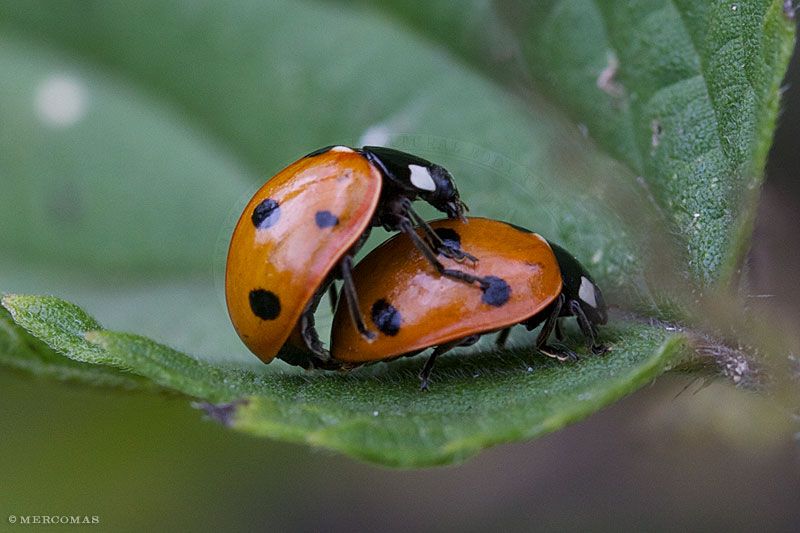
Copulation between ladybugs
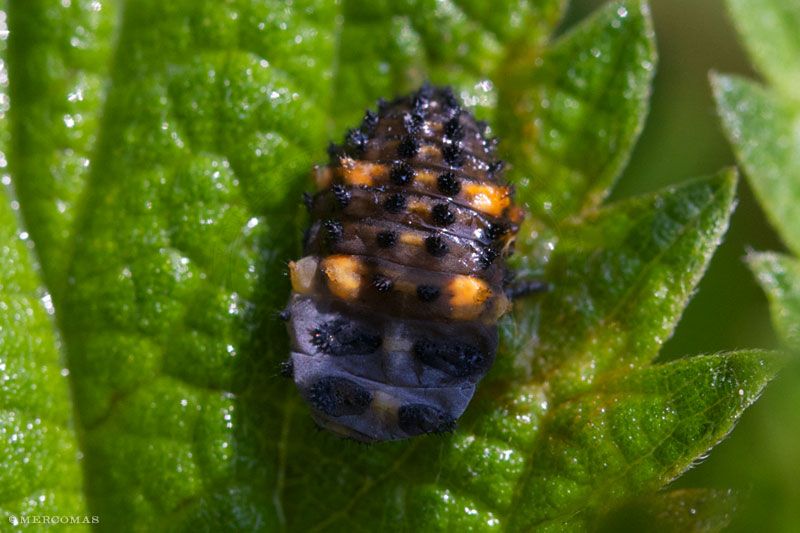
Larvea inside of new forming cocoon
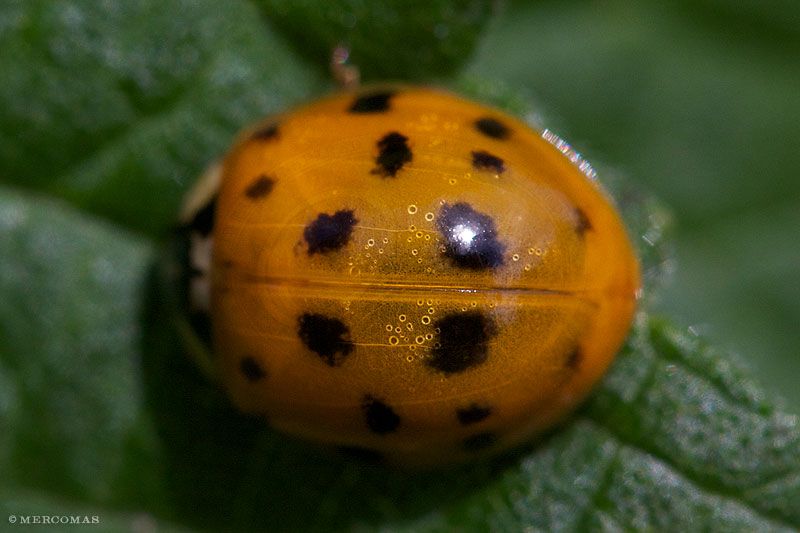
Developing ladybug closeup
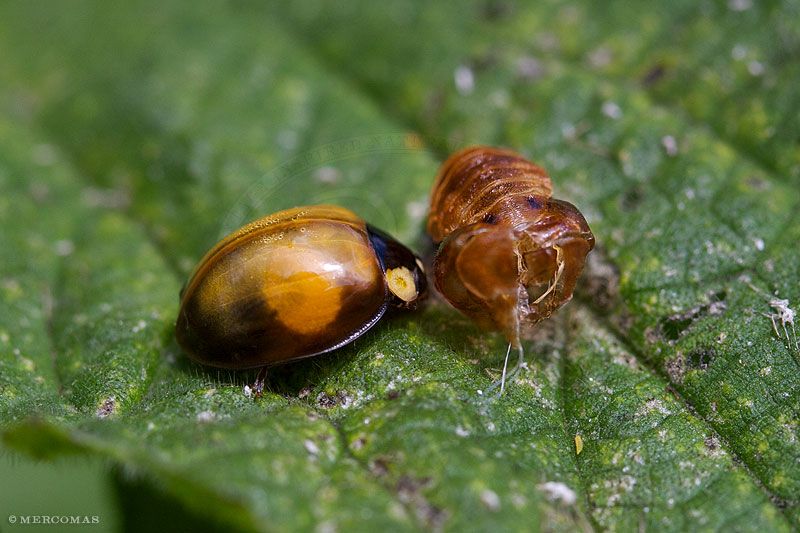
Ladybug hatched from cocoon
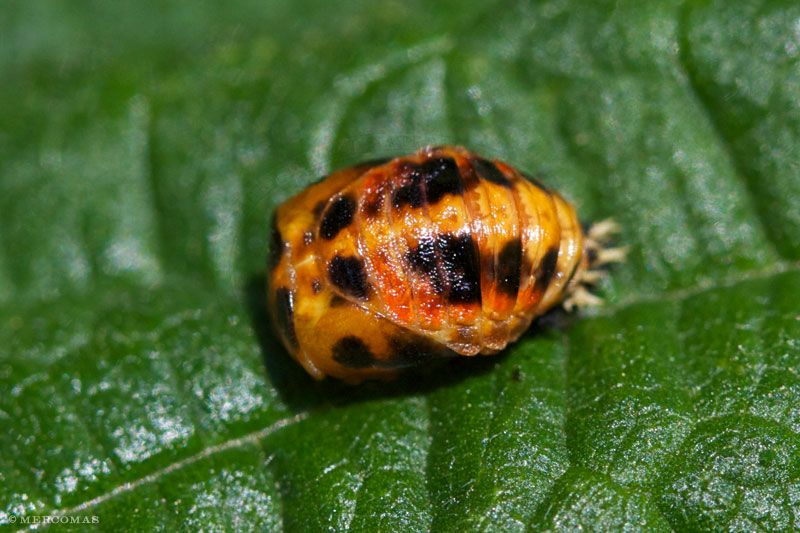
Ladybug Cocoon Stage

Developing ladybug
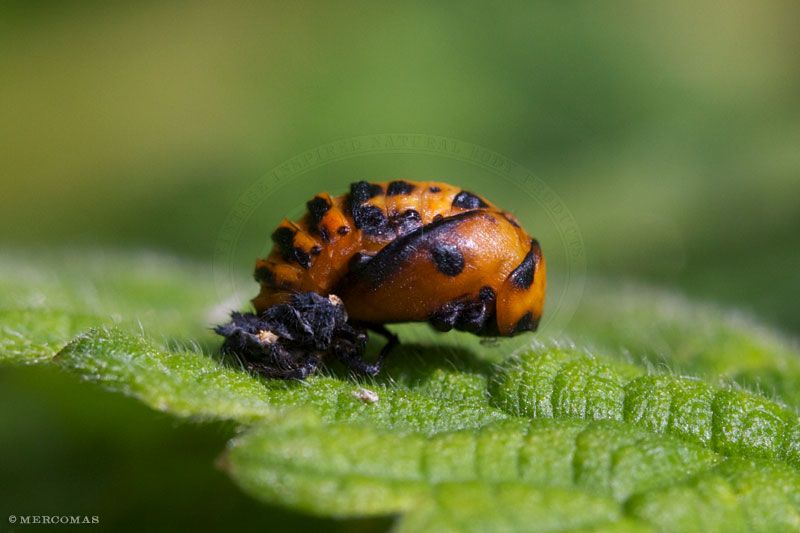
Ladybug Cocoon Stage
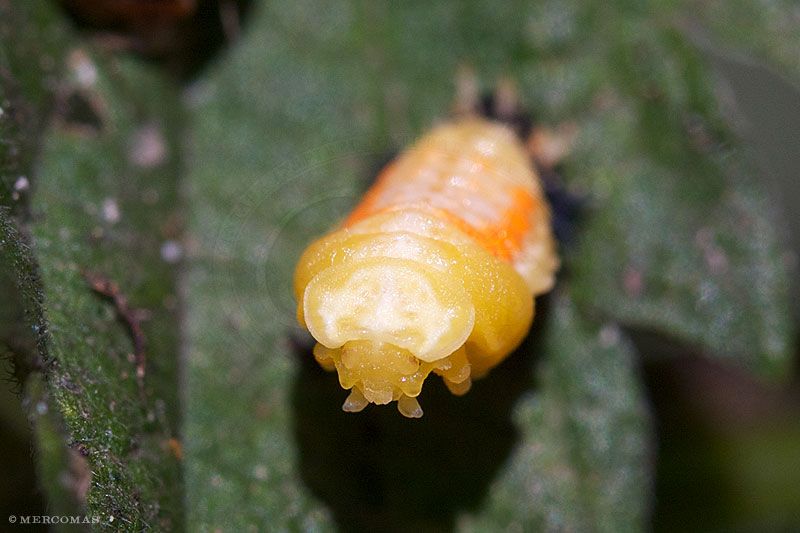
Ladybug in early cocoon stage, notice the head of the ladybug.
